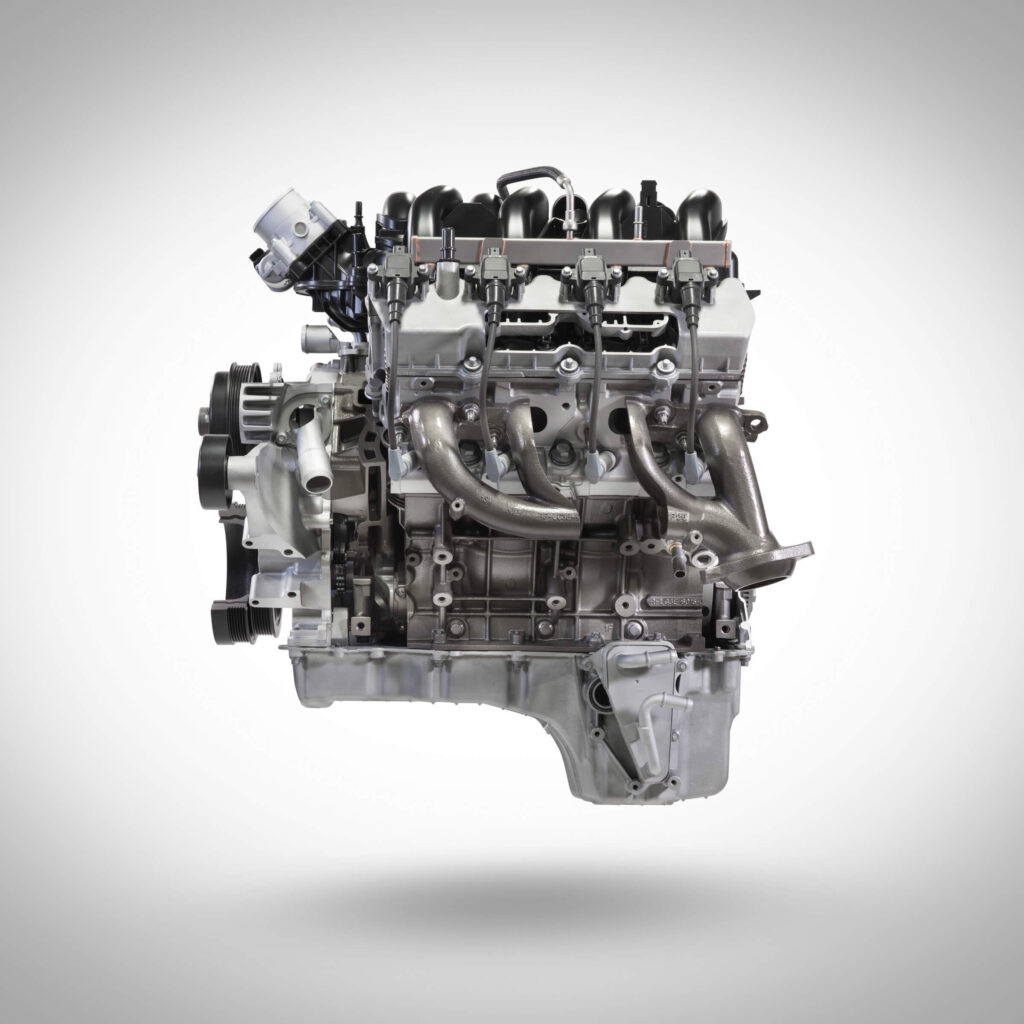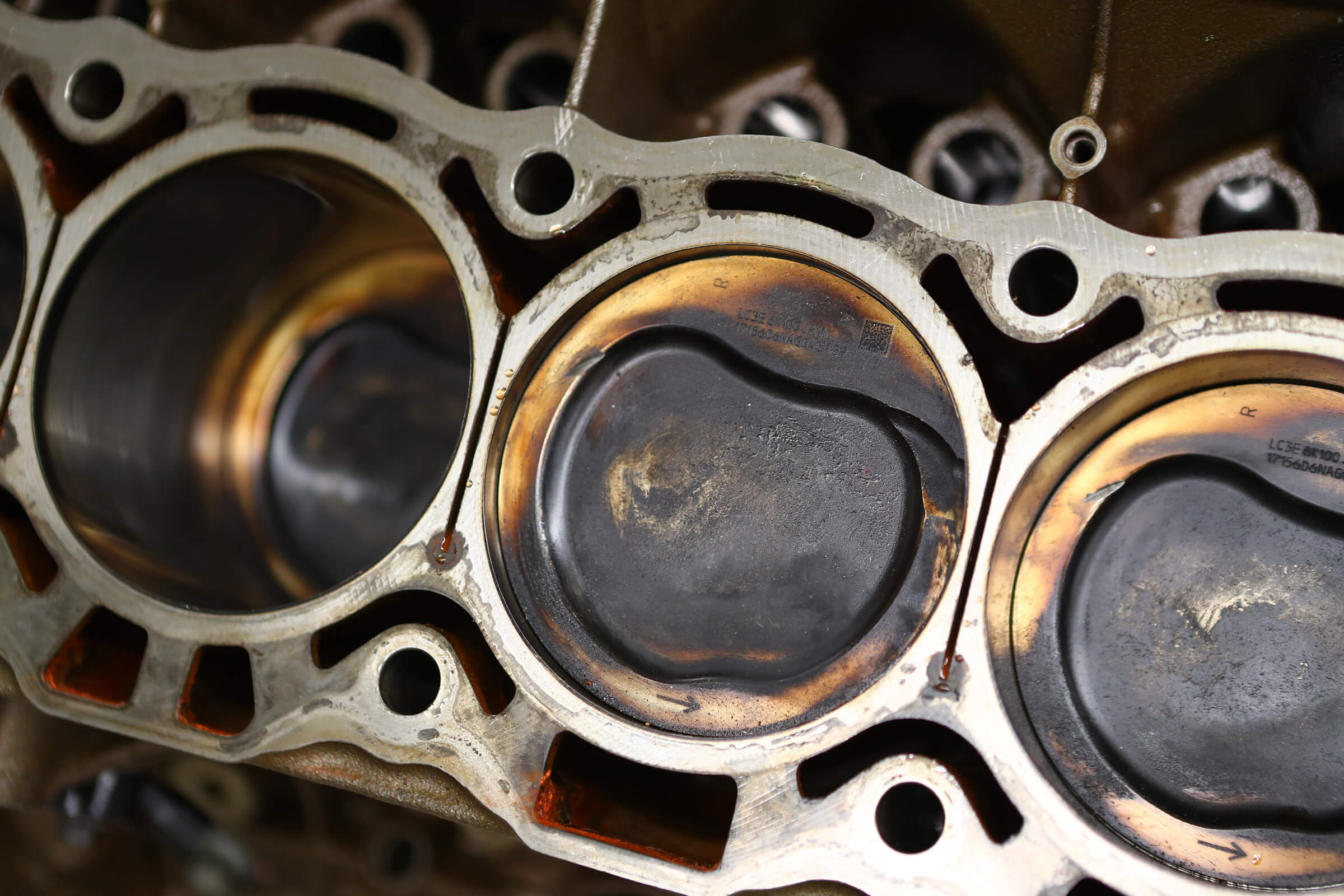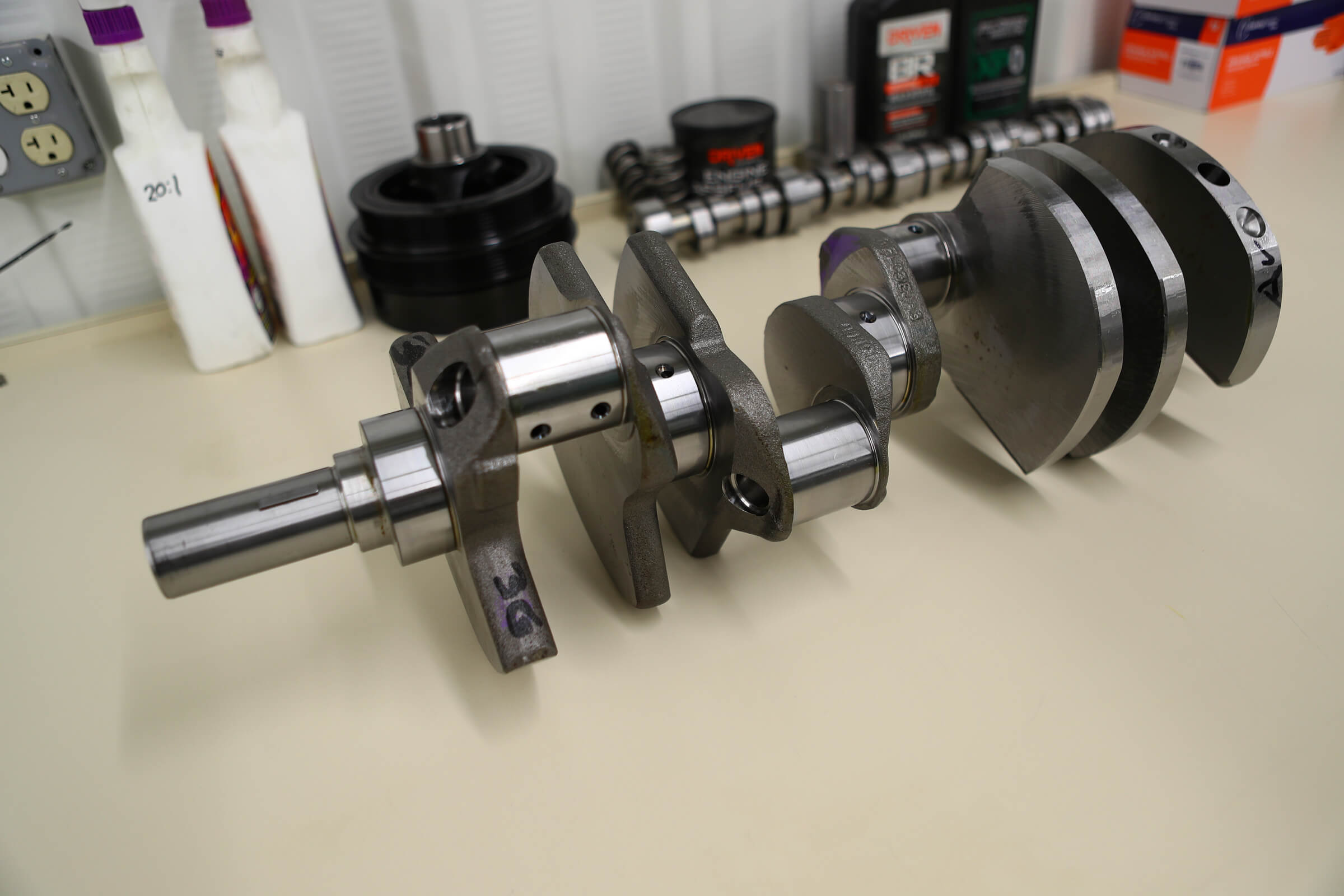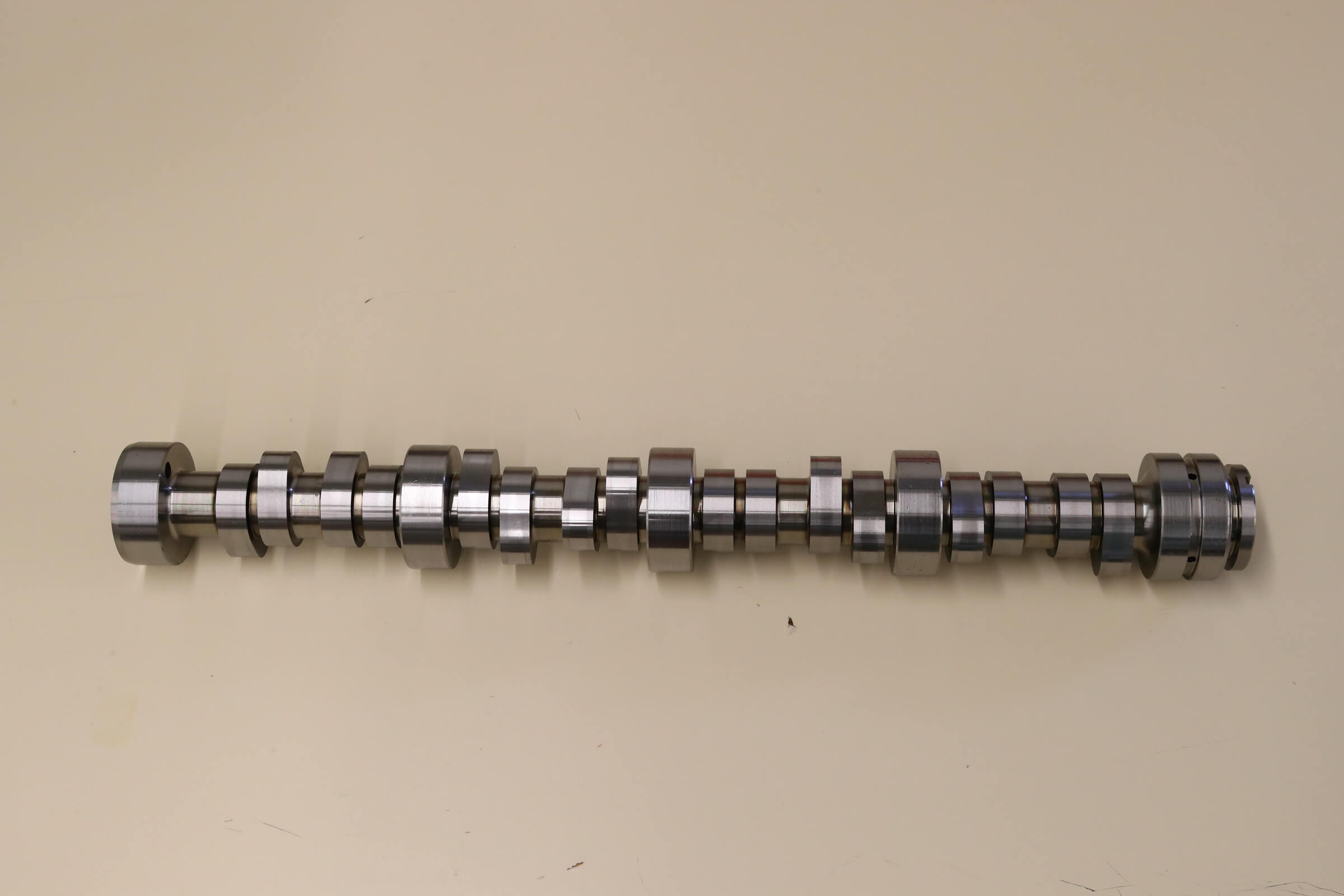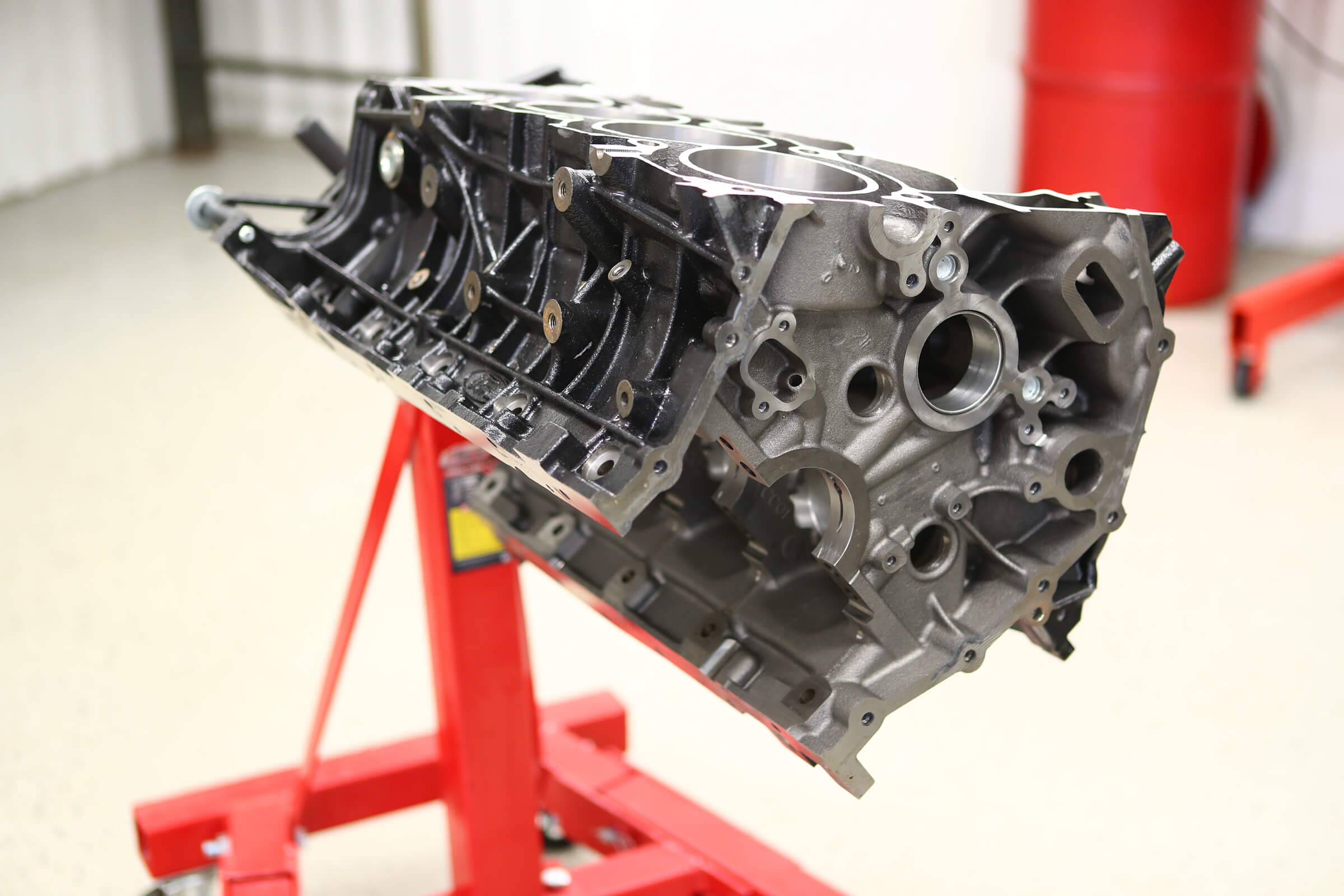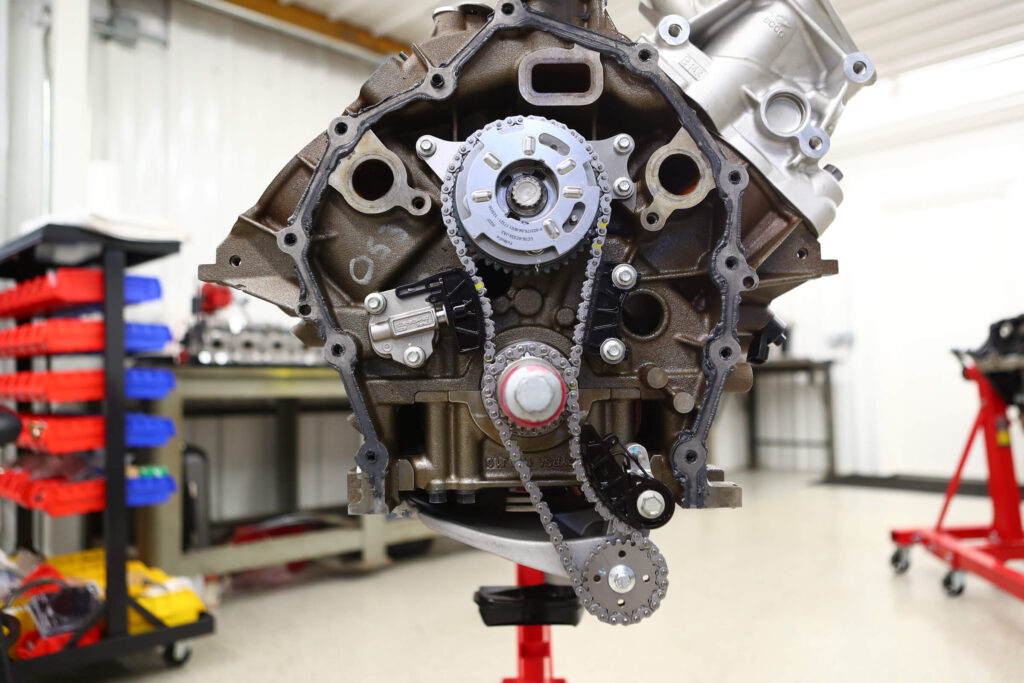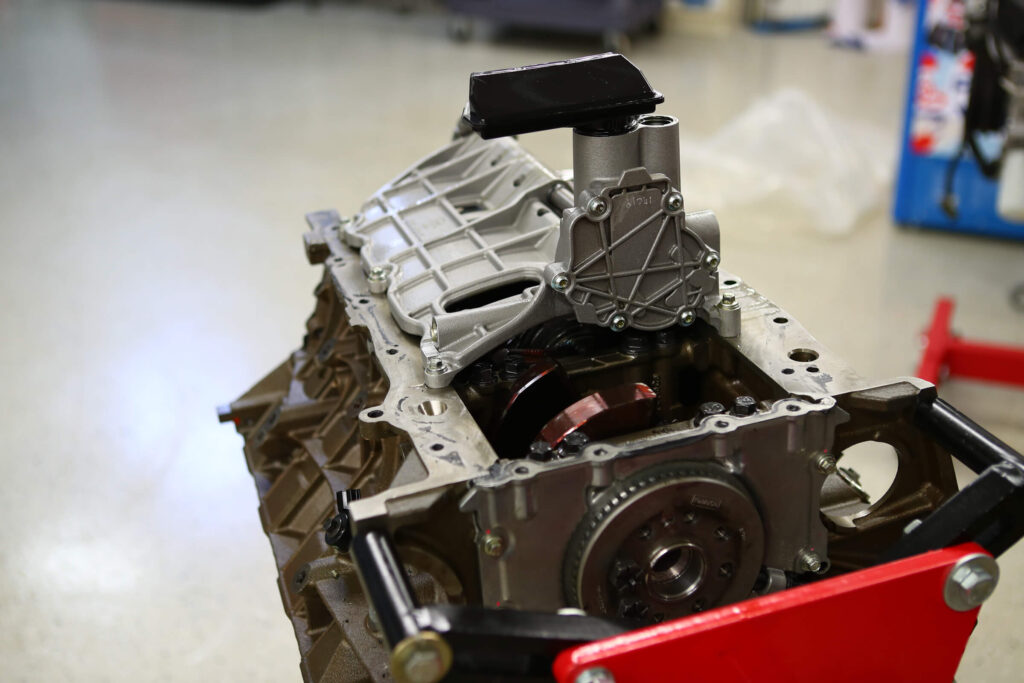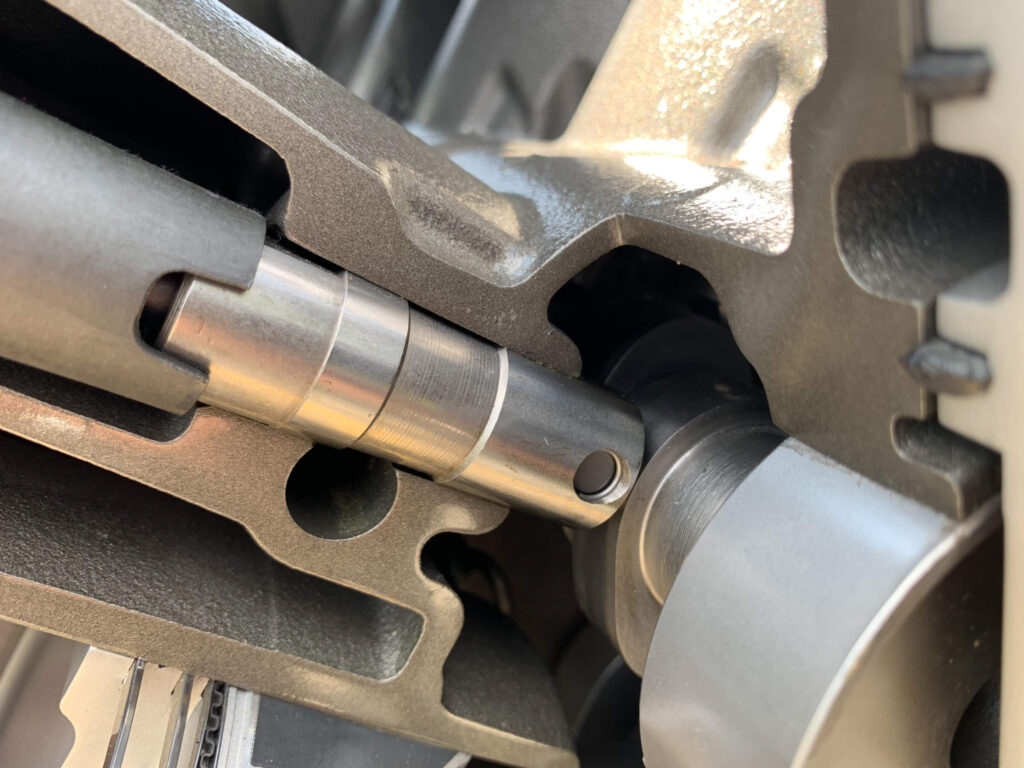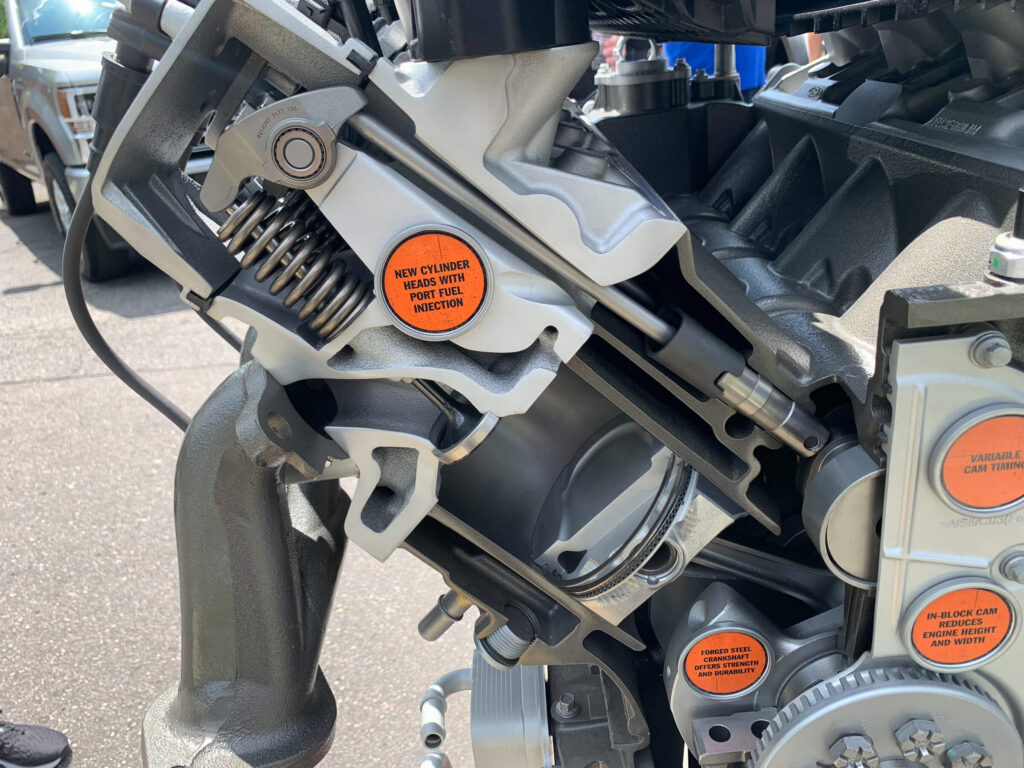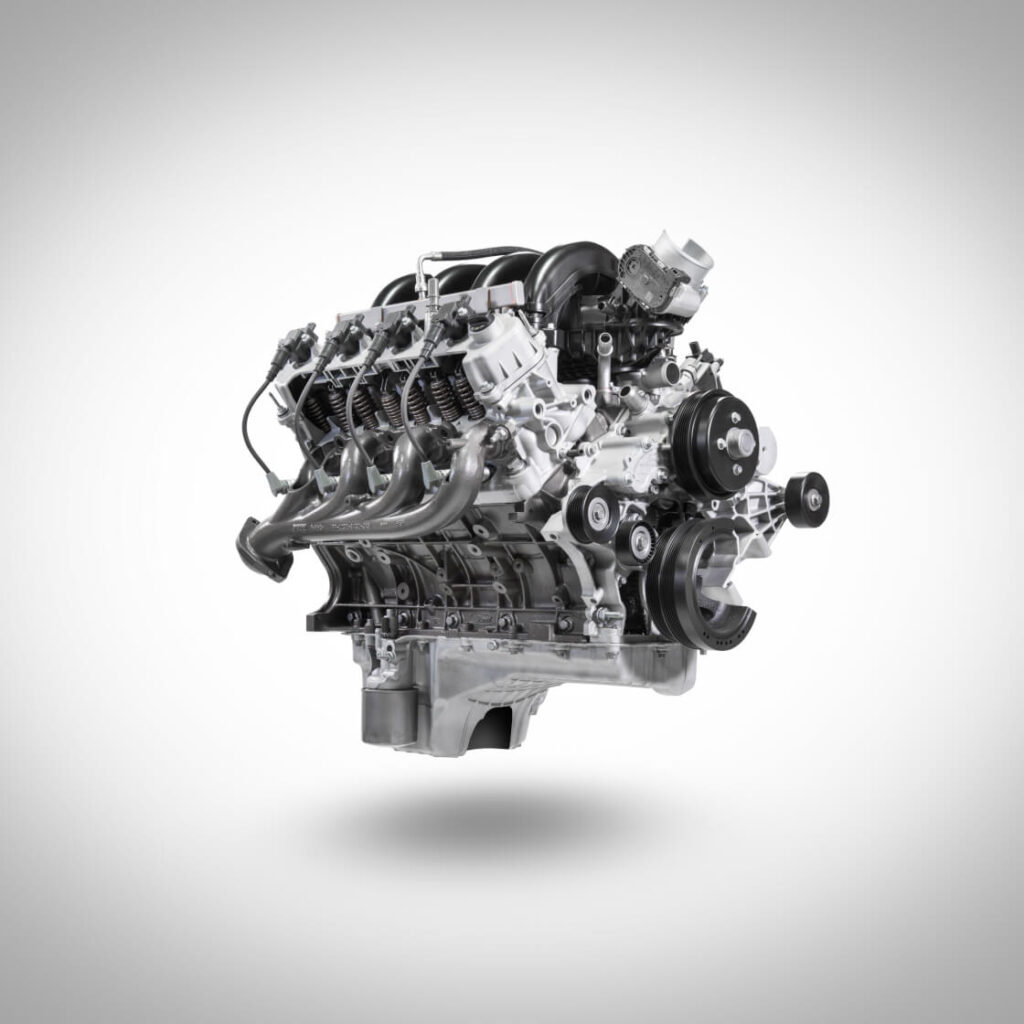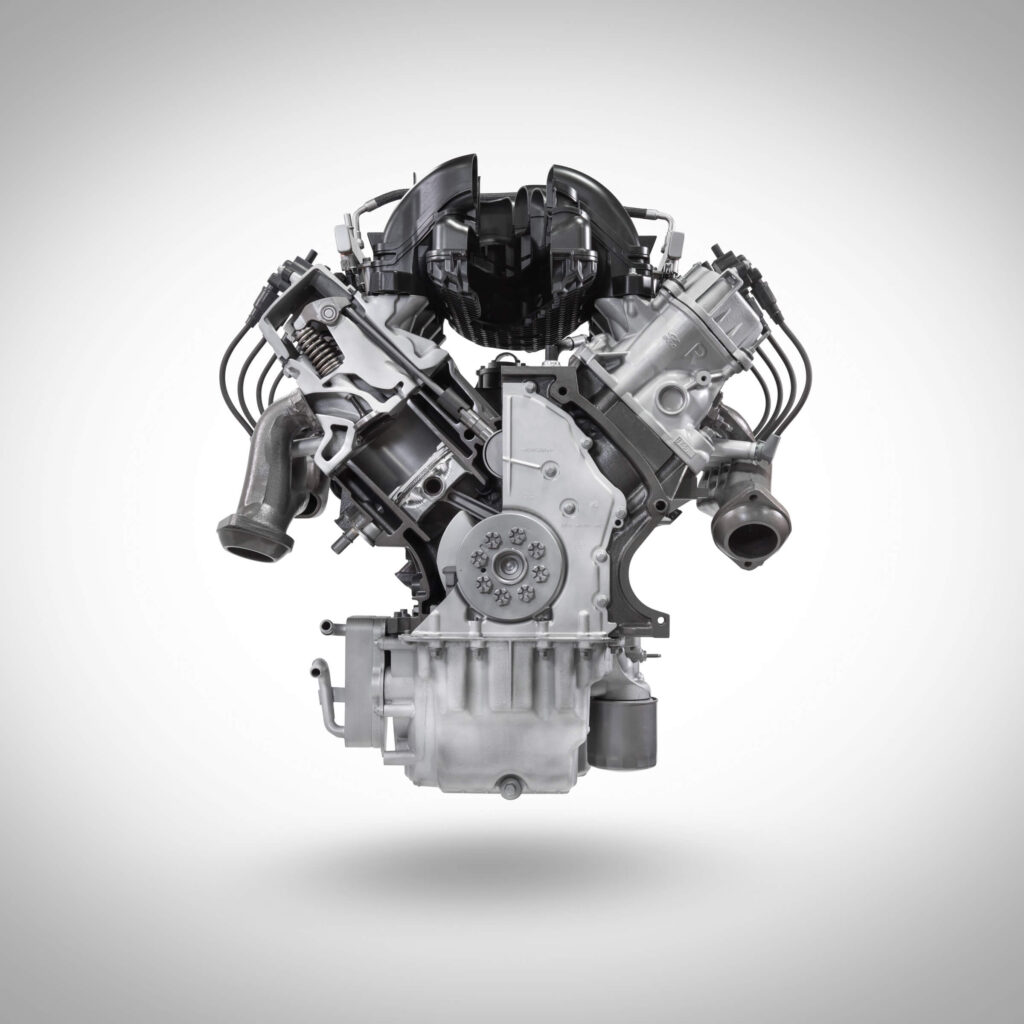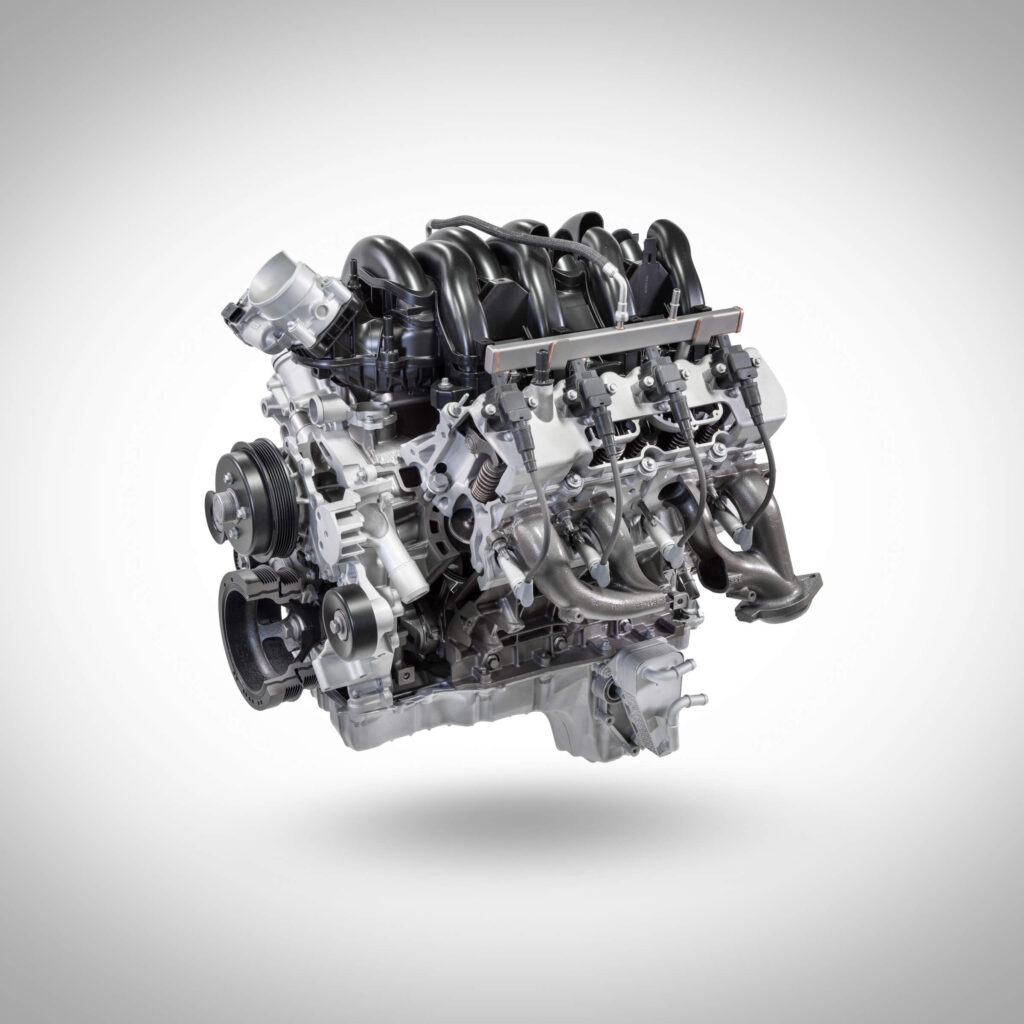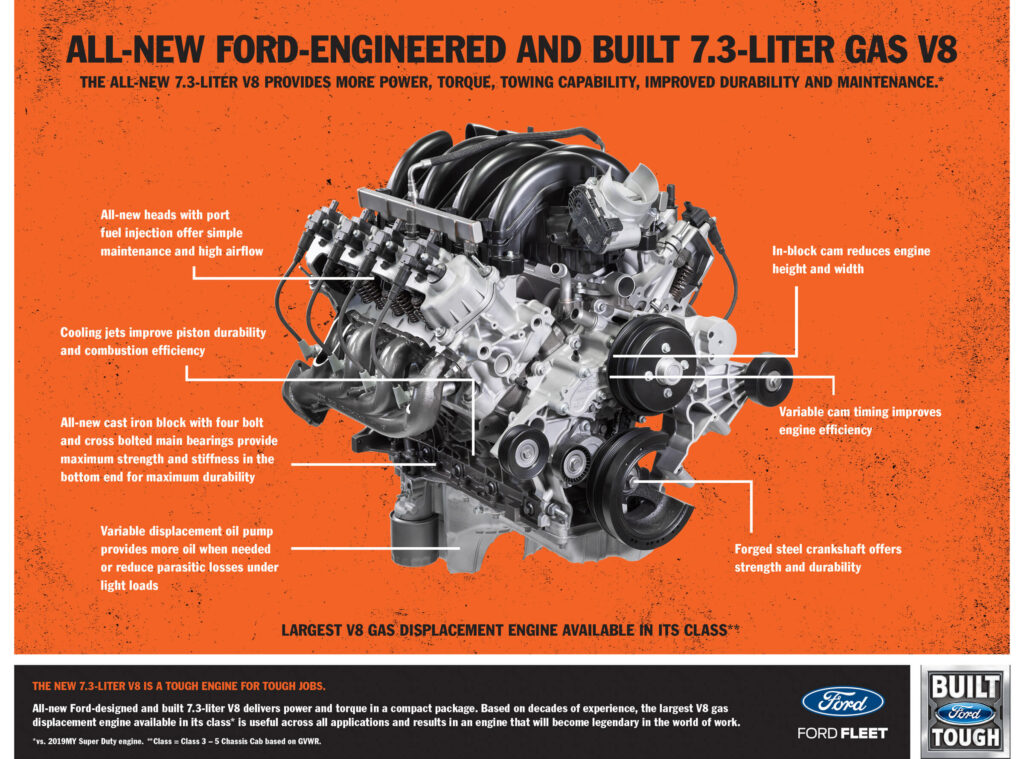Author: Evan Smith | 03/30/2021 Original Post at Holly
It’s not every day a major OE manufacturer introduces an all-new V8 engine, especially one that ignites a flame in performance enthusiasts. But last year, Ford Motor Company did just that when it released its new 7.3L gasoline V8 dubbed “Godzilla.” The big V8 is designed for Super Duty trucks and produces 430 horsepower at 5,500 rpm and best-in-class torque with 475 ft.-lb. at 4,000 rpm.
What makes this story most amazing is that Ford returned to a cam-in-block design with pushrods and wedge-style heads instead of utilizing the modular or Coyote platform its been developing for more than two decades. In fact, it’s been exactly 20 years since Ford produced a gasoline-fueled pushrod V8—the last being a 302 with 210 horsepower found in the 2001 Explorer.
The new pushrod Ford displaces 445 cubic inches and while it’s not slated for the 2021 Mustang, you can order one from Ford Performance as a crate engine for swaps or custom builds and the aftermarket is starting to respond with parts to improve performance.
Godzilla, as it’s being called, was developed as an option for F-250-and-up Super Duty models as a severe-duty engine that’s powerful, durable, and affordable to build and maintain. Interestingly enough, the very features that make it a strong truck engine get us hot rodders fired up, too. We’ve already seen one makeover 700 horsepower naturally aspirated and 1,450 horsepower with a supercharger!

Blaine Ramey, supervisor of large gas and diesel engine performance development at Ford Motor Company said, “When the project kicked off [Brian Wolfe, who is now retired] was the director of global engine engineering and we decided to go with a brand new design, one that made the most sense for customers. We had a clean sheet of paper and this design offered customers what they were looking for in that segment. Basically, the 7.3L fits the heavy-duty market for trucks and we wanted to have a common engine that would go across the board. This will be in dump trucks, motor homes, and pick-up trucks. We needed a relatively compact package with low cost and high reliability. It made sense to do a pushrod V8 for cost to the customer and maintenance.” Ramey, it should be noted, is also a drag racer with an 8-second Cobra Jet Mustang.
He continued, “This engine uses everything that Ford has learned [about engine building]. The same guy who did the 5.0L and the 5.2L Shelby [GT350] intake port developed this engine. It’s brand new with no compromise. It is designed to be very rugged with a cast iron, four-bolt main block with cross bolts, and the pistons and rings are an evolution of the EcoBoost design. There are fewer parts (compared to the DOHC engines) and it’s built in Windsor [Ontario].”
So what makes this Super Duty truck mill a hot rodder’s dream? Let’s start with the block. Bore and stroke are 4.22in x 3.976in respectively, which equates to 445 cubic inches (7.3L) of displacement. “We wanted good performance potential so it has large bores,” added Ramey. “Big bores are also good for cylinder head flow and creates slower piston speed (relative to the stroke) during cruise modes for better efficiency. We also designed the engine so it can be serviced and rebuilt in the future. So, for these reasons the iron block made the most sense.” Going 0.030-inch over would give you 457 cubes and with a stroker crank there’s room to net just roughly 500 cubic inches.
The factory crank is a sturdy forged steel unit retained with the aforementioned four-bolt main caps in a deep-skirted block with two side bolts per cap. The main journal size is 2.66-inches (same as the 6.2L Ford V8) and the rod journals measure 2.086-inch (common to Coyote 5.0L). The back of the crank (which has 8 bolts) along with the rear of the block, is common to Ford modular and Coyote. Deck height is 9.65 inches and there is a soft cut at the top of the deck surface for coolant flow. The factory uses powdered-metal cracked cap connecting rods that swing cast pistons, but there are good steel and aluminum options on the market.
Uncommon to the performance market is the chain-driven variable-displacement oil pump. “We used a variable-displacement oil pump to precisely control oil pressure to a target pressure. So basically, we can control the pressure depending on driver demand. At idle we don’t need much pressure, at higher speed or load we can increase pressure to protect the engine.”
The 8-quart oil pan is deep and made of cast aluminum, and some models feature Super Duty and Medium duty oil coolers attached on the side of the block but block-off plates to eliminate the coolers are available from Paul’s High Performance in Jackson, Michigan.
Induction is always a hot topic and that’s one area that will require attention for some swaps. The factory truck engine uses a composite intake manifold with a front-mounted and upswept 80mm throttle body. The location of the TB is not optimum for swaps into most cars as hood clearance becomes a huge issue. But fret not, as aftermarket intakes are on the way. The 7.3L “Godzilla” has a dry valley, so the intake stays cooler and there’s minimal chance of an oil leak. The 7.3L does not currently utilize direct injection, but Ramey says it can be adopted later if necessary.
As you’d expect, the engine has aluminum cylinder heads with all the modern features. “We used a wedge combustion chamber with a spark plug location that’s optimized at the center of the piston dish. This affords the ability to have a higher compression ratio and it equals better efficiency and performance. We also use piston-cooling jets that flow oil to the backside of the pistons for cooling to prevent detonation under high load. Valve sizes are 2.17 (intake) and 1.66-inches on the exhaust, they sit at an 8.8-degree angle and are canted at 1.8 degrees. Cam lift is .539/.600 (13.67mm/15.26mm) intake/exhaust respectively and the cam bore is a big 60mm with 9 journals to limit deflection.
You’ll also note the beehive valve springs are very tall. This was done to accommodate the high valve lift with low spring stress. “With a tall spring you’re not deflecting the coils as much,” said Ramey. “Pretty much all our engines have evolved to that design with lightweight retainers.”
It also uses hydraulic roller lifters with variable valve timing with a single phaser. “It has fixed overlap, but you can advance and retard the cam [on the fly]. This gives us the ability to reduce pumping loss at low engine speed and throttle position, but at higher speeds we can change the phasing for better air flow.
Unlike the 4.6L Two-, Three- and Four-Valve modular and DOHC 5.0 Coyote engines this is a big incher, but in a relatively small package. It’s 25.5 inches wide at the top of the valve covers, which is about two inches wider than a typical 351 Windsor. It’s 24 inches long (351W is typically 22.5 inches) so it will fit in just about anything where you’d find a V8. And with engine swaps being all the rage, it will only be a matter of time before we them in a classic Ford’s, late-model Mustangs, street rods or dare we say, in a GM product.
We anticipate the 7.3L Godzilla engine will be a hit with performance enthusiasts. With a performance intake, cam and tune this would make a wicked option for any racer or street enthusiast.

